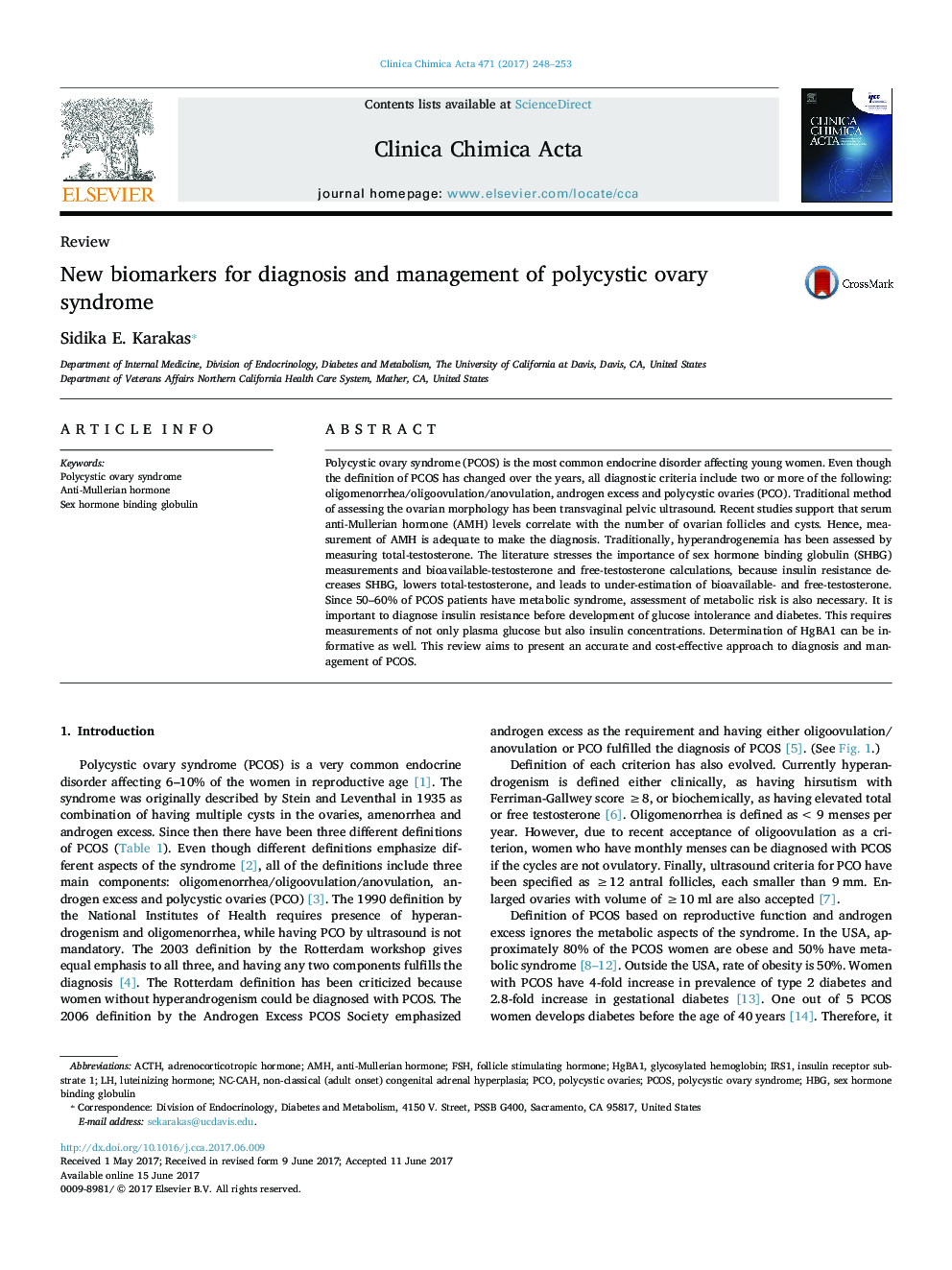| Article ID | Journal | Published Year | Pages | File Type |
|---|---|---|---|---|
| 5509614 | Clinica Chimica Acta | 2017 | 6 Pages |
Abstract
Polycystic ovary syndrome (PCOS) is the most common endocrine disorder affecting young women. Even though the definition of PCOS has changed over the years, all diagnostic criteria include two or more of the following: oligomenorrhea/oligoovulation/anovulation, androgen excess and polycystic ovaries (PCO). Traditional method of assessing the ovarian morphology has been transvaginal pelvic ultrasound. Recent studies support that serum anti-Mullerian hormone (AMH) levels correlate with the number of ovarian follicles and cysts. Hence, measurement of AMH is adequate to make the diagnosis. Traditionally, hyperandrogenemia has been assessed by measuring total-testosterone. The literature stresses the importance of sex hormone binding globulin (SHBG) measurements and bioavailable-testosterone and free-testosterone calculations, because insulin resistance decreases SHBG, lowers total-testosterone, and leads to under-estimation of bioavailable- and free-testosterone. Since 50-60% of PCOS patients have metabolic syndrome, assessment of metabolic risk is also necessary. It is important to diagnose insulin resistance before development of glucose intolerance and diabetes. This requires measurements of not only plasma glucose but also insulin concentrations. Determination of HgBA1 can be informative as well. This review aims to present an accurate and cost-effective approach to diagnosis and management of PCOS.
Keywords
Related Topics
Life Sciences
Biochemistry, Genetics and Molecular Biology
Biochemistry
Authors
Sidika E. Karakas,
